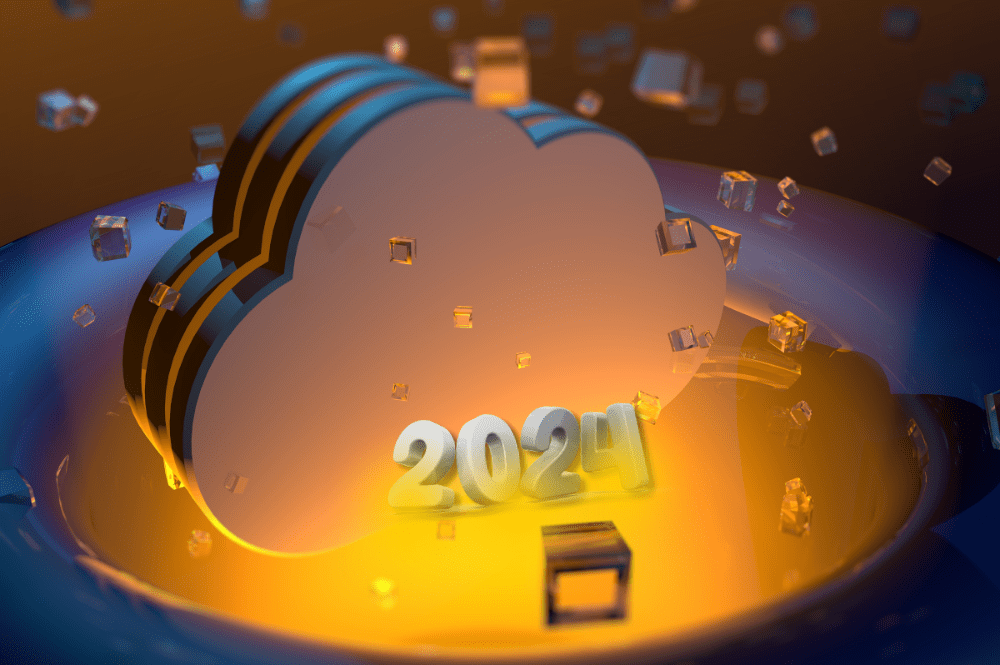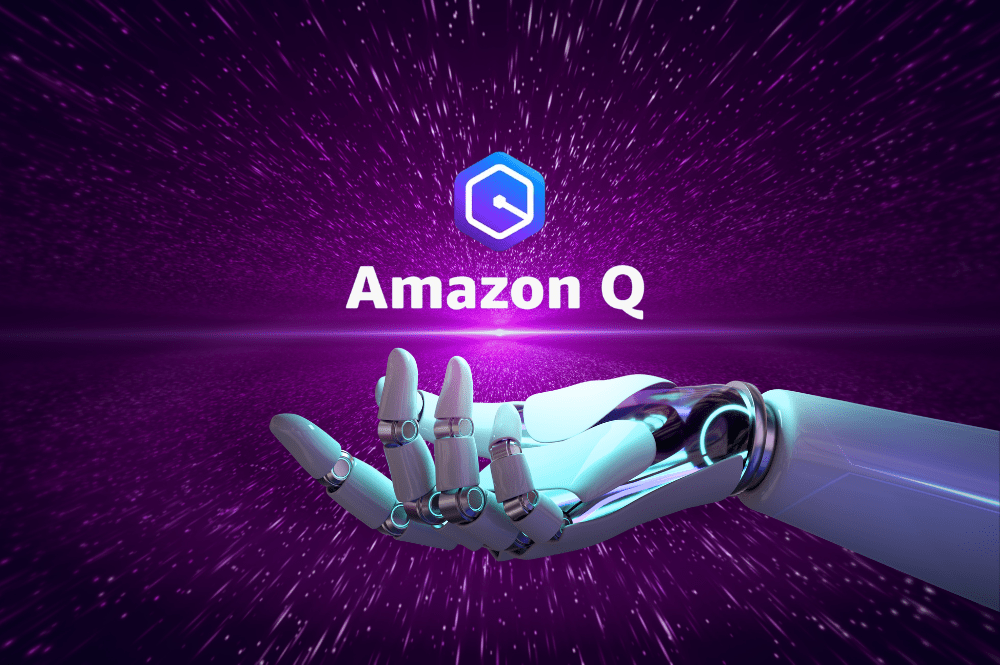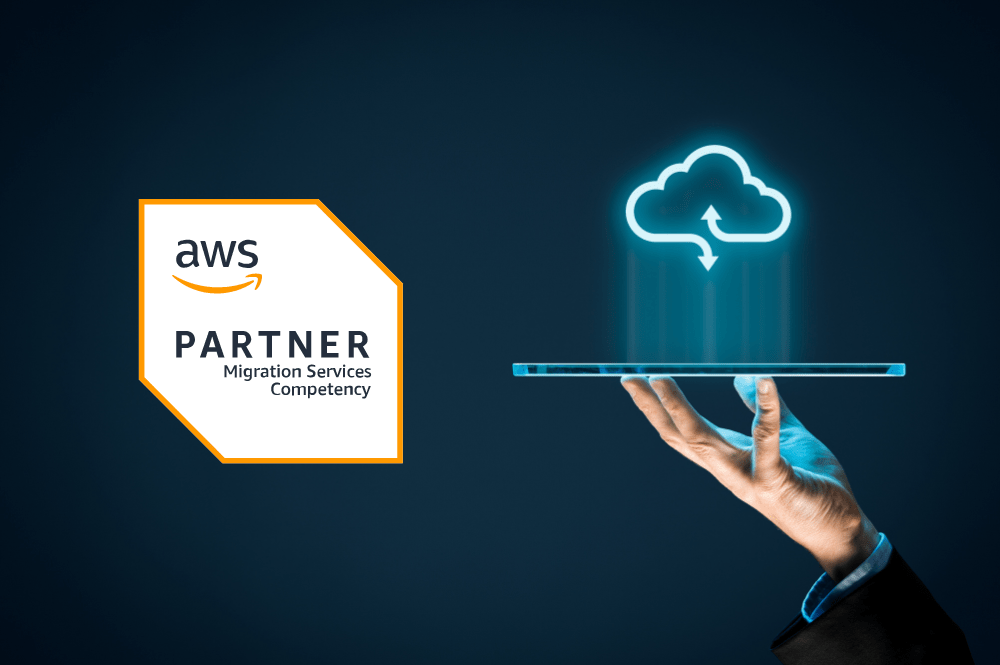Since its inception, cloud computing trends have initiated a huge paradigm shift in the operational landscape of businesses. In 2024 businesses worldwide are expected to spend over $1 trillion on cloud computing infrastructure. In this ever-changing tech landscape, one must stay well-informed about technological advancements. Discover six trends that will guide you through the dynamic tech arena of 2024.
1. AI As-A-Service Infuses the Cloud
The AI as a Service (AIaaS) sector is poised for significant growth with projections indicating an increase from $9.86 billion in 2023 to $14.27 billion in 2024. This showcases a notable Compound Annual Growth Rate (CAGR) of 44.7%. The surge is fueled by the rising adoption of cloud services. This has played a pivotal role in the broader expansion of AI and ML as a service market.
AIaaS has become essential across industries, revolutionizing business operations. Major cloud providers offer advanced AI capabilities, integrating cutting-edge technologies into workflows. Organizations have widely adopted AIaaS for diverse applications. This includes seamless integration with the Internet of Things (IoT) and automation driven by AI algorithms. Additionally, there are advancements in augmented analytics, expansion of generative AI, and multi-modal AI.
Transform your business with our innovative AI and Machine Learning solutions, tailored to meet your diverse needs.
2. The Power of Serverless
It is safe to say that 2024 will see serverless computing expanding beyond its initial functions. As serverless models further extend their functionality, it eliminates the need for business to handle their servers and optimizes cost. The versatility that comes with this improvisation will mark a new phase in cloud architecture.
With the progression of serverless platforms, businesses are positioned to harness their capabilities. This will help them in constructing and deploying agile, cloud-native applications. Serverless architectures are renowned for cost-efficiency, scalability, and prioritizing application logic – and will continue to play a pivotal role in the evolving tech landscape.
Do you want to read more about the latest Serverless innovations by AWS? – Head over to our blog: Road to Serverless: Insights From Peter DeSantis at re:Invent 2023.
3. Edge Computing Decentralizes the Cloud
The future of the cloud prioritizes optimizing data generation, processing, delivery, and collection – all while emphasizing efficiency in the data movement. The use of 5G networks integrated with efficient processors has greatly contributed to the growth of edge computing.
The fusion of edge computing and cloud services addresses the focus on optimizing data processes. The integration with its promising features is quickly picking up pace. It is producing results by providing real-time data processing at the edge. This leads to reducing latency for IoT applications.
Contrary to the belief that edge computing will dominate cloud computing. A different perspective has emerged in 2024. Rather, its goal is to position a segment of the cloud’s processing power and storage capacity in proximity to devices generating and consuming data. This results in a cohesive hybrid computing environment, giving the best of both edge and cloud capabilities.
4. Sustainability and the Green Cloud
The concept of ‘Green Cloud’ signifies an environmentally conscious strategy in cloud computing. The thought behind it is to reduce energy consumption while minimizing costs and environmental impact. There are many environmental advantages to transitioning traditional IT infrastructure to the cloud. The major one is using energy-efficient infrastructure. This aids in a significant drop in the carbon footprint associated with traditional data centers.
Like many other companies, AWS is dedicated to reaching 100% renewable energy use by 2025. This initiative is backed by their substantial investment in data centers powered by wind and solar energy. AWS provides sustainability solutions for its customers. These include carbon emissions tracking, energy conservation, and waste reduction.
5. Leveraging Cloud Cost Optimization Tools
According to Gartner, the worldwide public cloud end-user spending is to reach over $600 billion in 2024. Amidst substantial advancements in cloud computing. Not to forget, the huge chunk of finances dedicated to it. The need for proficient cloud cost management is now more crucial than ever.
Amongst other challenges, business leaders are now faced with the task of managing their cloud expenses. This is where cost optimization tools come to the rescue. These tools assist businesses by enhancing resource usage. Additionally, they identify inefficiencies and enhance financial adeptness in cloud operations. Cost optimization tools leverage a variety of technologies to streamline expense management.
Cloud-based solutions often rely on services provided by major cloud platforms, such as AWS for efficient resource monitoring. Third-party tools may incorporate AI and ML algorithms to analyze spending patterns, predict future expenses, and automate decision-making. Additionally, aligning with DevOps practices and integrating financial management software contributes to a comprehensive approach to cost optimization.
Do you want to lower your AWS bills? Learn more in our blog: 6 Proven Strategies for Iterative AWS Cost Optimization.
6. Continued Focus on Cloud Security, Compliance, and Governance
One of the most valuable cloud computing trends for businesses is cloud security. The growing reliance on cloud technology comes with its drawbacks. Cloud threats are major drawbacks businesses must look out for. Cloud-related risks include unmanaged attack surfaces, misconfigurations, and the risk of data breaches. It is crucial to mitigate these risks through robust security measures and continuous monitoring for a secure cloud environment.
In 2024, cloud providers are anticipated to boost their cloud compliance services. This will help businesses ensure security and compliance with global data privacy regulations. Additionally, cloud governance further amplifies the efforts of businesses to improve data security. This will help them mitigate risks and enable the smooth operation of cloud infrastructures.
Do you have concerns about the security of your business? Optimize Your Cloud Security and Compliance solutions with Cloudelligent.
Cloud Smarter, Not Harder With Cloudelligent
As an AWS Advanced Consulting Partner, we couldn’t be more excited about what 2024 has in store. We can help you think through these cloud computing trends. Whether you need migration support, Gen AI development, serverless refactoring, or some other cloud support, we have you covered!
Book a meeting with us to propel your business into the future.








